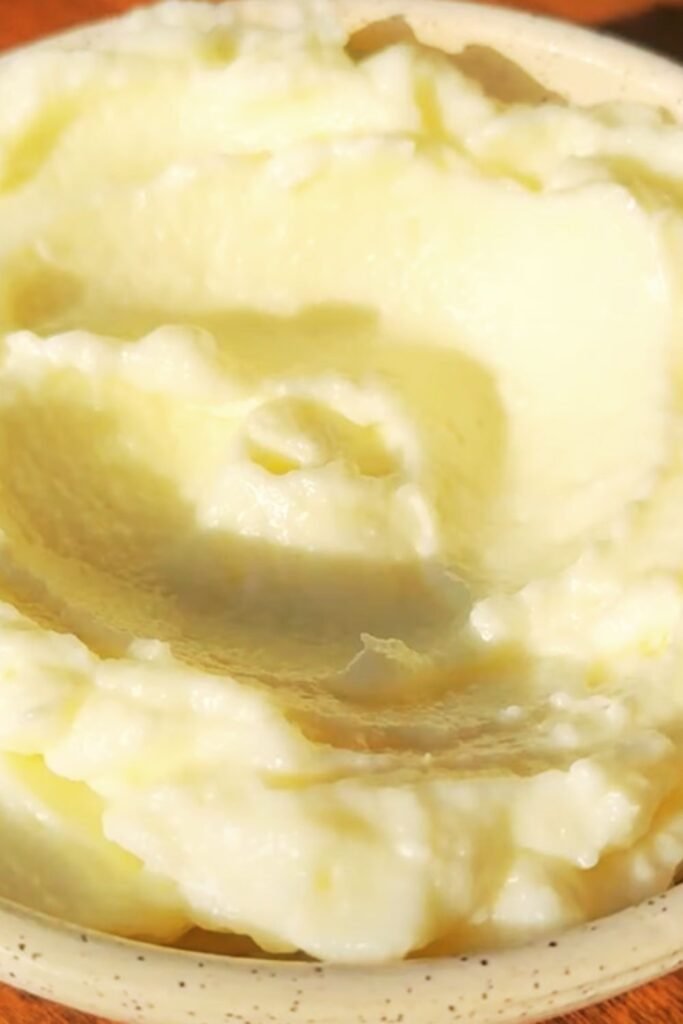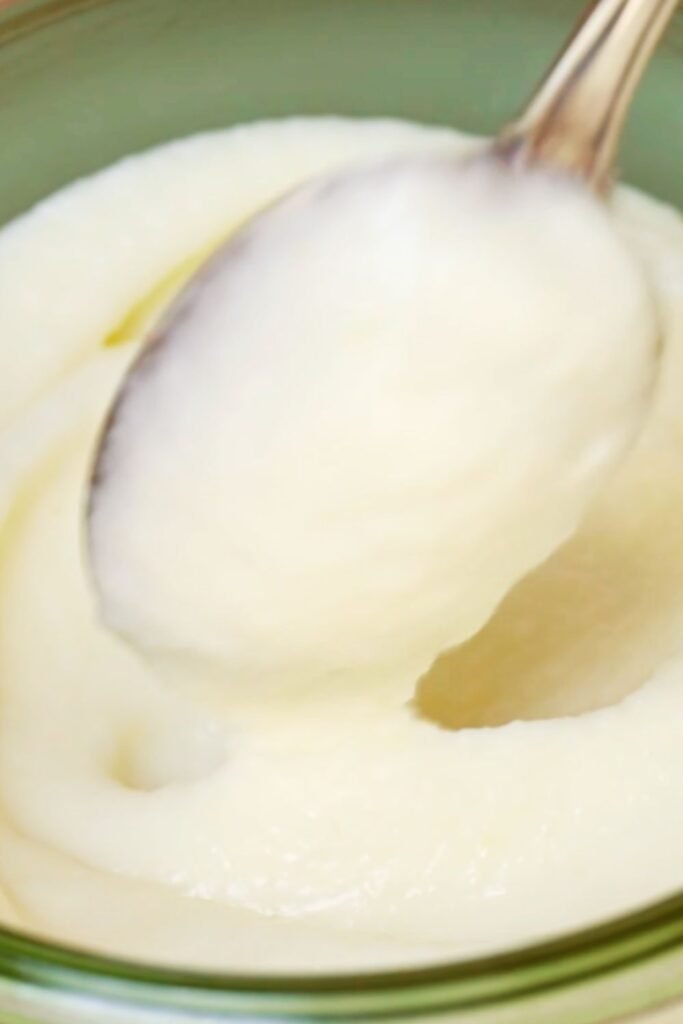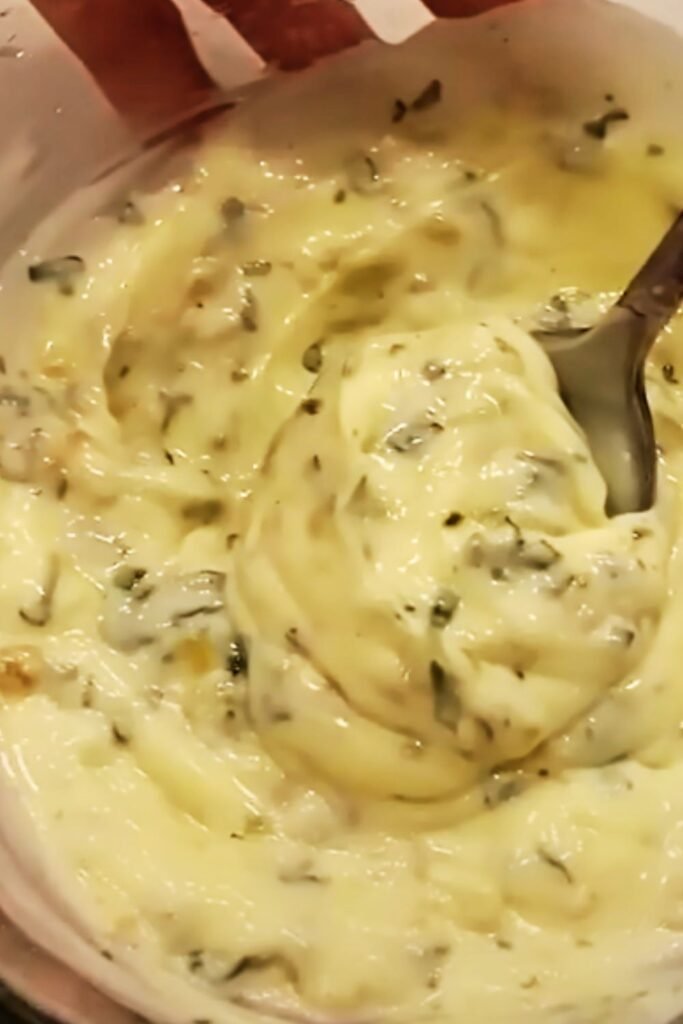Have you ever tasted something so intense, so flavorful that it completely changes the way you think about food? That’s what happened to me the first time I experienced authentic Lebanese garlic sauce, known as “toum” (pronounced “toom”). This creamy, cloud-like emulsion packs such a powerful punch that it’s forever changed my approach to Mediterranean cooking.
I’ll never forget watching my Lebanese neighbor, carefully transforming simple ingredients—garlic, oil, lemon juice, and salt—into this magical white sauce that smelled like heaven and tasted even better. She insisted I take some home, and the next day, I slathered it on grilled chicken. My taste buds were forever changed.
Today, I’m sharing everything I’ve learned about making perfect toum, from traditional techniques passed down through generations to modern shortcuts that deliver that same incredible flavor with less effort. Whether you’re a garlic enthusiast looking to expand your culinary horizons or someone who wants to recreate authentic Lebanese flavors at home, this guide will give you all the knowledge you need to master this extraordinary condiment.
What Is Lebanese Garlic Sauce?
Lebanese garlic sauce, or toum (meaning “garlic” in Arabic), is a staple in Lebanese cuisine that dates back centuries. Unlike many other garlic-based sauces from around the world, toum is an emulsion—similar in technique to mayonnaise, but without eggs.
Traditional toum is:
- Snow-white in color
- Fluffy and airy in texture
- Intensely garlicky in flavor
- Slightly tangy from lemon juice
- Completely dairy-free
The magic of toum lies in its transformation. Raw garlic cloves and neutral oil create a light, airy sauce that’s smooth enough to spread, yet thick enough to hold its shape. When made correctly, it has the consistency of whipped cream cheese or a light mousse.
The Cultural Significance
In Lebanon and throughout the Levant region, toum isn’t just a condiment—it’s an essential part of the culinary tradition. It’s the quintessential accompaniment to:
Shish tawook (grilled chicken skewers) : The classic pairing—the coolness of the toum balances the char of the grilled meat perfectly
Shawarma : Adds a creamy, punchy element to these popular wraps
Falafel : Creates a perfect contrast with the crunchy exterior of these fried chickpea patties
Grilled meats of all kinds : Elevates simple proteins to extraordinary meals
I’ve watched Lebanese families pass down their toum recipes as precious heirlooms, with each generation putting their own subtle spin on the classic. Some families guard their recipes jealously, while others share them generously—but all recognize toum as an integral part of their food heritage.
The Science Behind the Perfect Emulsion
To understand why toum works (or sometimes fails), it helps to understand the science. An emulsion is a mixture of two liquids that normally don’t combine—in this case, water (from the garlic and lemon juice) and oil.
The secret to successful toum lies in creating a stable emulsion, where tiny droplets of oil become suspended in the water phase. This is where garlic plays a crucial role beyond just flavor.
Garlic contains natural emulsifiers—compounds that help oil and water mix. When garlic is processed, these compounds act as bridges between oil and water molecules, preventing them from separating.
Here’s what happens in the emulsification process:
- Garlic is broken down, releasing its natural emulsifiers
- Oil is added very slowly, allowing tiny droplets to form
- These droplets get coated with the emulsifiers
- The result is a stable, unified mixture that stays together
When your toum “breaks” or fails to form, it’s because the emulsion didn’t establish properly. The oil droplets weren’t adequately coated and instead joined together, separating from the water phase.
Understanding this science helps troubleshoot problems and explains why technique matters so much in making successful toum.
Traditional vs. Modern Methods
The Traditional Mortar and Pestle Method

Traditionally, toum was made using a large stone mortar and pestle—a labor of love that required serious arm strength and patience. The process went something like this:
- Peeled garlic cloves were crushed with salt to create a paste
- Oil was added literally drop by drop while continuously pounding
- Occasional drops of lemon juice were incorporated to maintain the emulsion
- This process continued for up to an hour until all the oil was incorporated
This method produces amazing results but demands significant physical effort and time. I tried it once and gained newfound respect for the generations of Lebanese cooks who made toum this way. My arm was sore for days!
Modern Food Processor Method
Today, most home cooks (including myself) opt for using a food processor, which maintains the same principles but requires far less physical effort:
- Garlic and salt are processed until finely minced
- Oil is drizzled in extremely slowly with the machine running
- Lemon juice is added periodically to maintain the emulsion
- The process takes about 10-15 minutes total
While purists might argue that the mortar and pestle method yields a slightly more complex flavor, I’ve found that a properly executed food processor method produces exceptional results that would make any Lebanese grandmother proud.
Ingredients Breakdown
The beauty of toum lies in its simplicity—just four ingredients that, when combined properly, create something extraordinary.
Garlic
This is the star of the show. For authentic toum:
- Use fresh, firm garlic bulbs
- Avoid pre-peeled garlic (it often contains preservatives that affect flavor)
- Look for bulbs with large cloves for easier peeling
- Make sure the garlic isn’t sprouting (green shoots indicate bitterness)
The quality of your garlic directly impacts the final result. I once made toum with aging garlic from the back of my pantry, and the harsh, bitter notes ruined the sauce. Fresh is non-negotiable!
Oil
The oil serves as both the vehicle for the emulsion and a flavor carrier:
- Traditional: Light olive oil (not extra virgin)
- Modern alternatives: Neutral oils like sunflower, canola, grapeseed, or avocado oil
- Avoid: Extra virgin olive oil (too strong and bitter) or oils with distinctive flavors
I prefer a 50/50 blend of light olive oil and sunflower oil—this gives a nod to tradition while ensuring the sauce isn’t too heavy.
Lemon Juice
Freshly squeezed lemon juice serves three purposes:
- Adds brightness to balance the garlic intensity
- Provides liquid to help establish the emulsion
- Contributes acidity that preserves the sauce
Never use bottled lemon juice—the preservatives can affect both flavor and emulsion stability.
Salt
Beyond seasoning, salt plays a crucial role:
- Helps break down garlic cells to release their natural emulsifiers
- Enhances flavor (obviously)
- Helps preserve the sauce
Kosher salt or fine sea salt works best—avoid iodized table salt if possible, as it can impart a metallic taste.
The Perfect Ratio
Through much experimentation, I’ve found the ideal ratio for foolproof toum:
| Ingredient | Amount | Notes |
|---|---|---|
| Garlic | 1 cup (about 25-30 cloves) | Peeled weight |
| Neutral oil | 3-4 cups | Temperature should be room temperature |
| Lemon juice | ¼ cup | Freshly squeezed |
| Salt | 1-2 teaspoons | Adjust to taste |
| Ice water (optional) | 2-4 tablespoons | Only if needed to rescue emulsion |
This ratio produces approximately 4 cups of toum. The range in oil quantity allows for adjusting the intensity—more oil creates a milder sauce, while less oil results in a more powerful garlic punch.
Step-by-Step Recipe
Equipment Needed
- Food processor (minimum 7-cup capacity)
- Measuring cups
- Citrus juicer
- Small bowl for lemon juice
- Spatula
- Storage containers
Preparation
- Prepare your garlic: Peel all cloves and remove any green sprouts (these cause bitterness).
- Check your food processor: Ensure it’s completely dry—any water can cause emulsion problems.
- Prepare lemon juice: Squeeze lemons and strain out seeds.
- Measure oil: Have it ready in a container with a pour spout.
- Bring all ingredients to room temperature: This is crucial for emulsion stability.
The Method
- Process the garlic base:
- Place peeled garlic and salt in the food processor
- Process until finely minced, stopping to scrape down sides
- The garlic should look paste-like but not completely smooth
- Start the emulsion:
- With the processor running, VERY slowly drizzle in about ¼ cup of oil
- This should take about 1-2 minutes—patience is key!
- You’ll see the garlic begin to thicken
- Add first lemon juice:
- With the machine still running, add 1 teaspoon of lemon juice
- The mixture might look like it’s separating momentarily—this is normal
- Continue the oil-lemon cycle:
- Continue alternating between slowly drizzling in ¼ cup oil (taking about 1 minute per addition)
- Follow each oil addition with 1 teaspoon of lemon juice
- Repeat until all oil and lemon juice are incorporated
- Watch for transformation:
- Around halfway through, you’ll notice the mixture becoming lighter in color
- By the end, it should be white, fluffy, and hold soft peaks
- Final adjustments:
- Taste and adjust salt if needed
- If the sauce seems too thick, you can process in 1-2 tablespoons of ice water
- Rest before serving:
- Transfer to a clean container
- Refrigerate for at least 1 hour before serving to allow flavors to meld
Troubleshooting Common Issues
Even experienced cooks sometimes encounter problems with toum. Here’s how to fix them:
If Your Emulsion Breaks (Separates)
This is the most common issue—your sauce looks liquid and separated instead of fluffy and white.
Fix it by:
- Stop adding oil immediately
- In a clean bowl, add an egg white OR 1 boiled potato (peeled and cooled)
- Process this new base until smooth
- Very slowly add your broken mixture back in, drop by drop
- The new emulsifier (egg white or potato) should help rescue the sauce
While not 100% traditional, this rescue method saves ingredients and usually works.
If Your Sauce Is Too Bitter
Some garlic can have a strong bitter note, especially if it’s older.
Fix it by:
- Add a small pinch of baking soda (no more than ⅛ teaspoon)
- Process briefly to incorporate
- The alkalinity helps neutralize some of the bitter compounds
If Your Sauce Is Too Thin
This usually means too much liquid was added too quickly.
Fix it by:
- Continuing to add oil very slowly
- The additional oil should help thicken the emulsion
Variations on the Classic
While traditional toum is perfect in its simplicity, I’ve experimented with some variations that stay true to the spirit while offering new flavor dimensions:
Herb-Infused Toum
After the emulsion is complete, add:
- ¼ cup finely chopped fresh herbs (mint, parsley, or cilantro work well)
- Process briefly just to incorporate
This vibrant green version is exceptional with lamb or fish.
Spiced Toum
Add these to the garlic before processing:
- ½ teaspoon cumin
- ¼ teaspoon Aleppo pepper
- Pinch of cinnamon
This warming version complements grilled beef beautifully.
Milder “Gateway” Toum
For those sensitive to garlic intensity:
- Blanch the garlic cloves in boiling water for 30 seconds before processing
- Increase the oil ratio slightly
This produces a gentler version that might appeal to garlic newbies.
Storage and Shelf Life

Proper storage ensures your toum stays fresh and maintains its texture:
| Storage Method | Expected Shelf Life | Notes |
|---|---|---|
| Refrigerator | 2-4 weeks | In airtight container; flavor mellows over time |
| Freezer | Up to 3 months | Freeze in ice cube trays, then transfer to freezer bags |
| Room temperature | Not recommended | Will separate and spoil quickly |
As toum ages, you may notice:
- The flavor becomes less sharp but more complex
- A slight liquid may form on top (just stir back in)
- The texture might become slightly more firm
I like to divide my batch into smaller containers—one for immediate use and the rest for longer storage. This minimizes exposure to air and contamination.
Serving Suggestions
Beyond the traditional pairings with grilled meats, toum’s versatility makes it a secret weapon in countless dishes:
As a Spread
- Slather on flatbread before topping with grilled vegetables
- Use instead of mayonnaise on sandwiches
- Spread thinly on toast before adding avocado for an elevated breakfast
As a Dip
- With roasted vegetables (especially cauliflower)
- Alongside crispy roasted potatoes
- With warm pita and crudités for an impressive appetizer
As a Sauce Base
- Thin with a little water to make a salad dressing
- Mix with yogurt for a milder sauce for fish
- Swirl into soups just before serving for a flavor boost
As a Marinade Ingredient
- Mix with yogurt for an incredible chicken marinade
- Combine with herbs and citrus for a flavorful fish marinade
- Brush on vegetables before grilling
My personal favorite unconventional use? Stirring a teaspoon into mashed potatoes just before serving—the heat mellows the garlic just enough while adding incredible depth of flavor.
Health Benefits of Toum
Beyond its incredible taste, toum offers several health benefits worth noting:
Garlic’s Medicinal Properties
Garlic has been used medicinally for thousands of years, and modern science confirms many of its benefits:
- Contains allicin, a compound with antimicrobial properties
- May help reduce blood pressure and cholesterol
- Has antioxidant properties that fight free radicals
- May boost immune function
Olive Oil Benefits
If using olive oil in your toum:
- Rich in heart-healthy monounsaturated fats
- Contains anti-inflammatory compounds
- Provides vitamin E and K
Modern Health Considerations
While toum is natural and made from whole ingredients, keep in mind:
- It’s relatively high in calories due to the oil content
- The raw garlic can be intense for those with sensitive digestive systems
- The high garlic content may interact with certain blood-thinning medications
I consider toum a “use sparingly but regularly” food—a little goes a long way both in flavor and potential health benefits.
Frequently Asked Questions

Why did my toum turn out liquid instead of fluffy?
The most common reasons are adding oil too quickly, using wet equipment, or starting with too little garlic. Make sure all equipment is bone dry, add oil in an extremely slow stream, and ensure you’re starting with enough garlic to properly form an emulsion.
Can I reduce the garlic for a milder version?
Unfortunately, reducing the garlic can compromise the emulsion. For a milder flavor, blanch the garlic briefly in boiling water before processing, use more oil, or mix the finished toum with a bit of yogurt when serving.
Is toum safe for pregnant women?
While the ingredients in toum are generally considered safe, raw garlic in large quantities might cause heartburn or digestive discomfort during pregnancy. As with any dietary concerns during pregnancy, it’s best to consult with your healthcare provider.
How can I get rid of garlic breath after enjoying toum?
Try chewing fresh parsley after your meal, eating an apple, drinking lemon water, or brushing your teeth and tongue thoroughly. If dining with others who are also enjoying the toum, remember—no one will notice if everyone has garlic breath!
Can I make toum in a blender instead of a food processor?
Yes, but with caution. Use a blender with variable speeds and start on the lowest setting. The narrower blender jar can sometimes create too much heat through friction, which can break the emulsion. Work in smaller batches if using a blender.
Why does my toum taste bitter?
Bitterness usually comes from one of three sources: old or sprouting garlic, processing the garlic too aggressively (creating heat), or using extra virgin olive oil. Try using fresher garlic, processing more gently, or switching to a more neutral oil blend.
Can I add herbs or spices to traditional toum?
Absolutely! While not traditional, herbs and spices can be wonderful additions. Add them at the very end of processing to preserve their color and flavor. Popular additions include mint, parsley, roasted red pepper, or a pinch of cumin.
Final Thoughts: Toum Beyond Tradition
Making authentic toum connects us to centuries of culinary tradition. There’s something profoundly satisfying about transforming humble ingredients into something so extraordinary using techniques passed down through generations.
But what I love most about toum is how it continues to evolve. Each Lebanese family has their own version, and as the sauce travels beyond Lebanon’s borders, new adaptations emerge that honor the original while creating something new.
I encourage you to master the traditional recipe first—understand the technique, experience the pure garlic flavor in all its glory. Then, feel free to experiment with your own variations. Perhaps your personal twist will become a new tradition in your family’s culinary story.
Remember that making perfect toum takes practice. Don’t be discouraged if your first attempt doesn’t turn out perfectly—even experienced Lebanese cooks sometimes have a batch that doesn’t cooperate. The journey of perfecting your toum is part of the joy of this remarkable sauce.
Whether you’re spreading it on a shawarma wrap, using it as a dip for fresh vegetables, or discovering your own favorite pairings, toum has a way of making everything it touches more delicious. I hope this guide helps you bring this Lebanese treasure into your own kitchen with confidence and creativity.